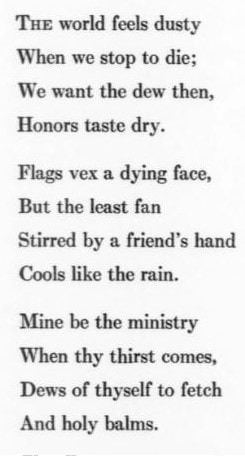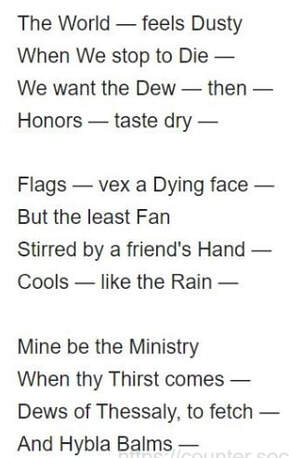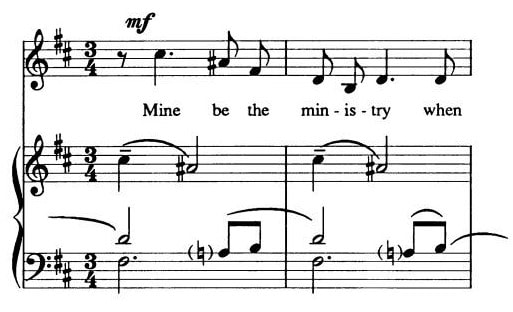To access the complete article, click HERE.
One interesting section of the essay I’d like to highlight, involves a concept I’ve never heard of before, but before I get there let me explain a few musical principles about rhythm.
First, think of a “beat” of a song. A march might be 1 - 2 , 1 - 2 , 1 - 2 , etc. A waltz is 1 - 2 - 3 , 1 - 2 - 3 , 1 - 2 - 3 , etc. A mainstream song might have 4 beats: 1 - 2 - 3 - 4 , 1 - 2 - 3 - 4 , 1 - 2 - 3 - 4 , etc. Sooo…the “1” in each case is called the “downbeat” – the starting beat of each “measure” of music (and I’ve separated the “measures” with commas).
Therefore, if one were to set Dickinson’s poem “Shame is the shawl of Pink” to music, it is highly likely the composer would start the vocal line by putting the word “Shame” on the downbeat. On the other hand, if writing a song for “The Sun just touched the morning,” it very likely the word “sun” would be on the downbeat, and the word “the” would be an unstressed syllable before the downbeat (that’s called up an “upbeat,” an unaccented beat preceding an accented beat).
Back to Copland’s rhythms – and Cherlin’s discussion of them: Take a look at the starting words to the first three lines of the poem “The World feels dusty."
NOTE: In the discussion forthcoming, I will use “u” for an unstressed syllable, and “/” for a stressed one.
Here’s what Cherlin said:
“The pattern of a single upbeat, ‘The world,’ to double upbeat, ‘When we stop,’ is extended one step further for opening line three, ‘We want the dew then’ ( u u u / u ). And the pattern continues further yet.”
NOTE: Cherlin’s discussion gets quite complicated at this point – if you’re a musician interested in the particulars, navigate to page 12 on the PDF article linked above.
Back to Cherlin’s comments on stressed/unstressed notes and the concept I’d never heard of before (mentioned at the start of this post – and please note, I added the ALL CAPS in the quoted section below):
“The final stanza is the problem child. Compared to the other stanzas it remains awkward, even in the authentic version, and more so in the 1929. ‘Mine be the ministry’ has a conflict between stressed/weak syllables and long/short speech durations. The former suggests a scansion of / u u , / u u , while speech rhythms in terms of duration suggest / u u , u u / . Copland solves the problem neatly by using a DURATIONAL PALINDROME in conjunction with a metric placement that correcsponds with syllabic stress. The delayed entrance of ‘mine’ participates in a short canon between voice and piano.”
Say what? A “durational palindrome”? LOL. I had to read that more than a couple of times until I figured it out that the “durational palindrome” was this: / u u , u u /
BUT – I have to say that if I understand all of this correctly, I disagree with Cherlin when he says “The former suggests a scansion of / u u , / u u , while speech rhythms in terms of duration suggest / u u , u u / .” I think that “speech rhythms” necessitate / u u , / u u – and I’ve listened to the Copland rhythm several times now and…
|



 RSS Feed
RSS Feed
